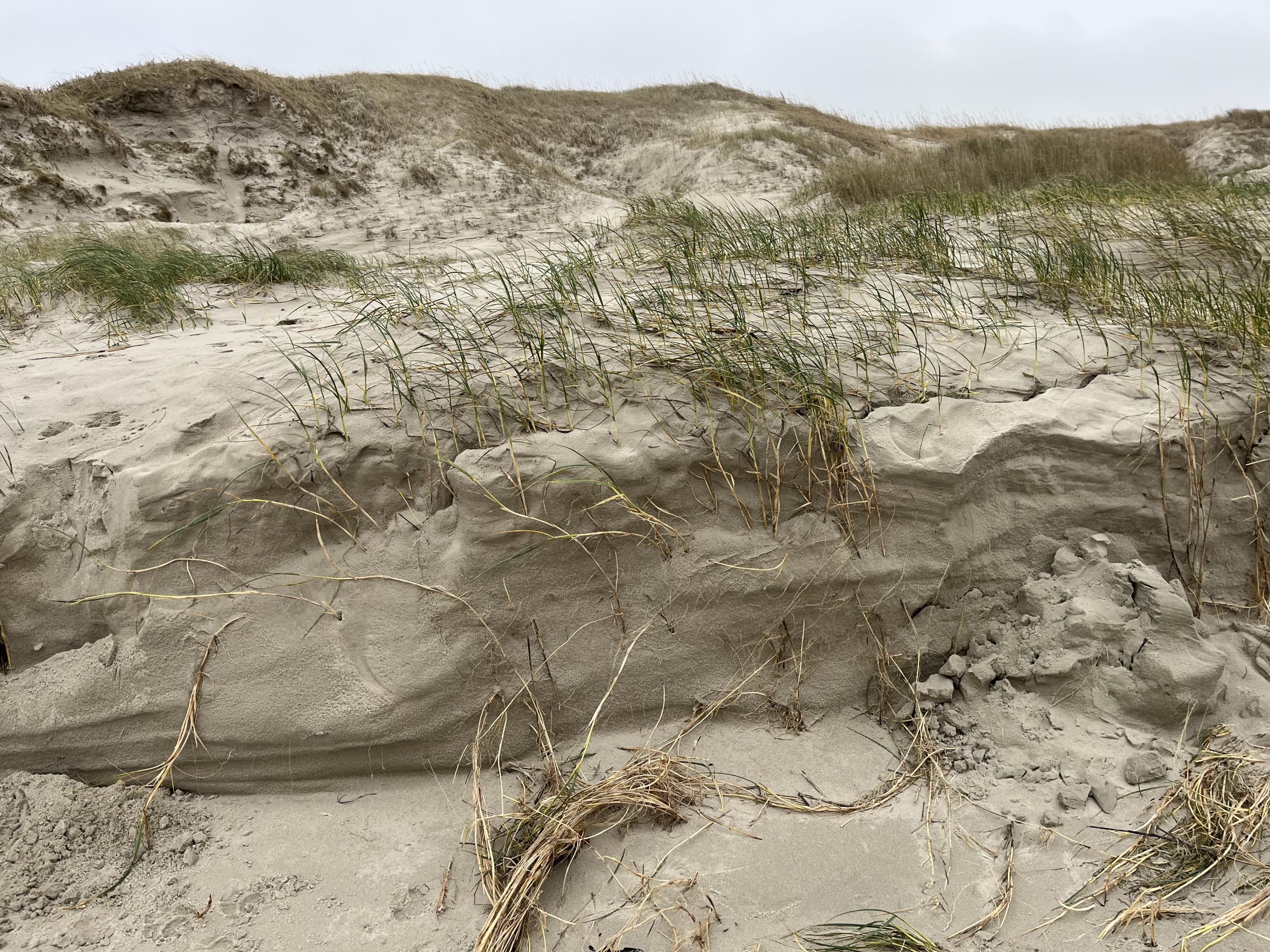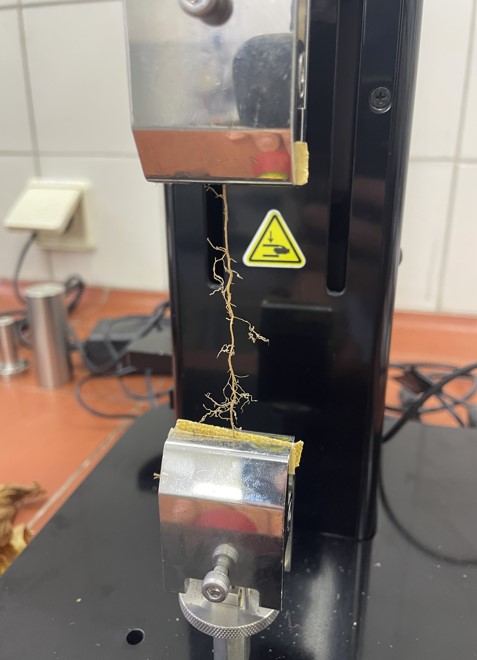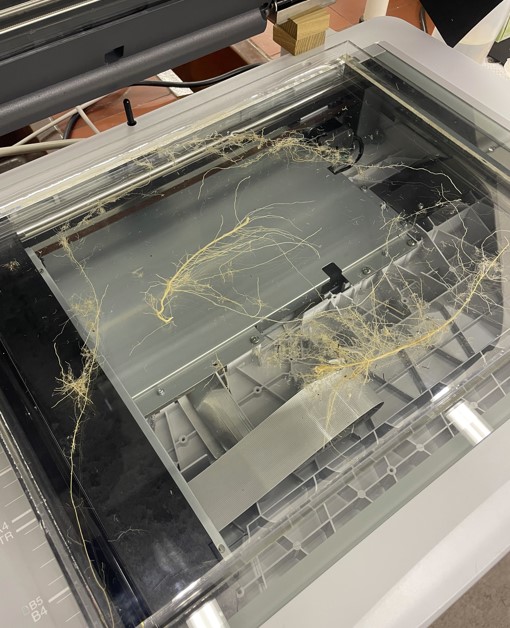A key factor in the success of dune-dike hybrids as Nature-Based Solutions is the role of vegetation, which helps trap sand, build dunes, and stabilize shorelines. Understanding plant-sediment interactions is a focus of the Biodiversity Functioning Team on the DuneFront project which includes researchers from Technische Universität Berlin, Technische Universität Braunschweig, Utrecht University, and Ghent University.
Coastal plants such as marram grass (Ammophila arenaria) and sand couch (Elymus farctus) have specialized architectural, morphological, and physiological traits that enable them to survive harsh conditions. These plants not only withstand strong winds, shifting sands, and salt exposure, but they also shape their environment. Above-ground structures (stems and leaves) intercept wind and trap sediment, while below-ground structures (roots and rhizomes) bind soil and decrease erosion. By studying these traits, we aim to quantify how vegetation influence to dune dynamics. 
Picture 1: Marram grass traping sand onto the dunes.
Our recent acitvity has focused on refining instrumentation techniques, developing sampling protocols, and selecting key traits and research parameters. Of particular interest is investigating the strength of above- and below-ground plant structures. Using a universal testing machine, we can determine the force that roots and stems can sustain. These measurements provide insight into how vegetation might withstand extreme wind or erosion conditions.

Picture 2: Testing the strength of the roots and stems of dune plants.
Another technique we use to explore plant traits is scanning technology. Root scans reveal information about root length, diameter, volume and when paired with mass data, provide insights into plant resource allocation strategies and biomass distribution patterns. Using laser scanning techniques, we can analyze above-ground structures and their influence on sand capture.

Picture 3: A laser scanner maps out the root system of the dunes.
During the past winter months, we have made visits to several DuneFront demonstrators allowing us to observe wide variation in coastal habitats and differing environmental conditions. These observations have supported our preparations for fieldwork planned to take place during the growing season. In the coming spring and summer months, we will conduct our field campaigns in which we will collect vegetation samples, measure plant traits and gather environmental data. This work will span a portion of the European Atlantic coast with locations in Germany, the Netherlands, Belgium, and France.
The resulting data will help us to strengthen our understanding of the links between plant traits and ecosystem functions. This will support our goals at DuneFront to refine nature-based solutions for coastal protection and contribute to the long-term effectiveness and adaptability of dune-dike hybrids.